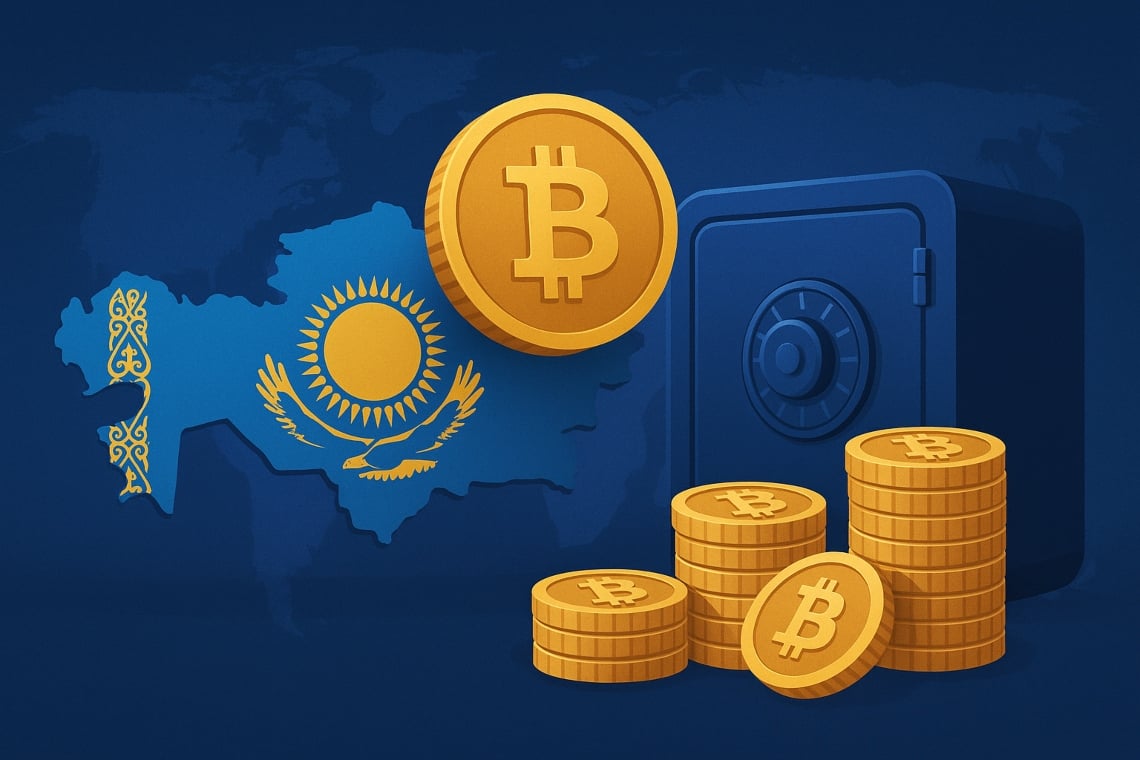With the upcoming establishment of the Kazakhstan crypto-reserve, the country is preparing to redefine the traditional concept of a state reserve, positioning itself at the forefront among nations adopting digital assets to strengthen national economic security.
The commitment of the National Bank of Kazakhstan for a transparent crypto-reserve
The president of the Banca Nazionale del Kazakhstan, Timur Suleimenov, has announced the start of an in-depth study on the creation of a crypto-reserve statale.
The primary objective is to develop a reliable management model for the accumulation and use of government crypto-assets, all within a subsidiary of the same Banca Nazionale.
The central issue concerns the transparency and security of management of this new form of reserve, aspects placed at the center of the project.
In particular, Suleimenov emphasized that Kazakhstan is inspired by the best international practices in sovereign fund management, adapting them to the context of crypto reserves.
This means implementing strict principles for accounting, custody of crypto-assets, and for every administrative procedure, promoting an environment of maximum transparency and security.
According to the statement by the head of the National Bank of Kazakhstan, the assets to be included in the reserve may come from two main sources.
That is, cryptocurrencies confiscated by the authorities (expropriated crypto-assets) and cryptocurrencies generated through mining activities carried out by state-participated operators.
This is therefore a strategy that values resources already in the possession of the State, channeling them into a centralized and regulated management.
This setup offers important advantages. First of all, it allows the State to capitalize on the extractive activities of cryptovalute, a phenomenon increasingly relevant in the national and global economy.
Furthermore, the inclusion of crypto-asset espropriati allows for unused or seized digital funds to be allocated to national financial security, adopting a pragmatic and sustainable approach.
The volatility of cryptocurrencies and the risks associated with their storage are known to all global financial operators.
According to Suleimenov, the solution identified by Kazakhstan to mitigate these threats consists of the institutional centralization of the management of crypto-reserves.
This favored approach offers an additional guarantee of security in the control of national digital assets, countering the uncertainties that often characterize decentralized markets.
Collaboration with institutions and plans for regulation
“`html
As a result, Kazakhstan aims to become a benchmark for all those countries interested in a centralized model of crypto resource administration, capable of ensuring both protection and efficiency in the preservation of State digital assets.
In the journey towards creating a solid state crypto-reserve, Kazakhstan intends to define precise operational and regulatory details.
The president of the National Bank stated that the development of the necessary mechanisms will take place in close coordination with law enforcement and the involved public authorities.
This process will ensure that every aspect of reserve management is perfectly regulated and aligned with current regulations.
“`
This opening to interinstitutional collaboration fits into the national strategy for the regulation of the cryptocurrency market.
Previously, Kazinform had already reported the government’s intention to initiate a careful regulatory path for the crypto sector. The objective is clear: to consolidate a stable legal framework, minimizing risks and promoting the sustainable development of the sector.
The choice to entrust state structures with the management of crypto-assets offers several advantages. Firstly, it ensures traceability and responsibility in the handling of digital funds, thanks to standardized and supervised procedures.
However, this setup is not without challenges: the protection of digital security and the mitigation of price volatility remain crucial objectives.
Kazakhstan, by adopting a strong and transparent institutional model, aims to address these issues by strengthening technological skills and oversight processes.
- Centralizzazione gestionale: ensures greater security, but requires advanced technological infrastructure.
- Transparency: advertising and clarity in management reduce the risks of abuse or errors.
- Regulatory approach: necessary to define each phase of storage, movement, and investment of the assets.
“`html
Kazakhstan and the international context of reserves in digital assets
“`
The prospect of a state crypto-reserve places Kazakhstan among the most innovative players on the stage of global public finance.
The Kazakh example could trigger reflections in other economies on the potential of digital assets, such as Bitcoin and similar cryptocurrencies, for the diversification and protection of national reserves.
Consequently, observing the evolution of the project will provide useful insights for both politicians and international financial analysts.
The diversification of reserves, which already involves traditional assets such as gold and currencies, now expands to new digital horizons.
In this perspective, Kazakhstan’s choice to adopt an advanced and centralized management of its crypto-assets appears to be in step with the times, reserving a leading role for public governance.
The creation of a Kazakhstan crypto-reserve represents an important opportunity to strengthen the financial sustainability of the country.
Through a centralized, transparent, and regulated system, Kazakhstan aims to promote greater trust in state-managed digital assets, reducing risks related to volatility and security threats.
Finally, Kazakhstan’s path will be closely watched by all economic and institutional operators. The consolidation of this model could influence how states view the management of crypto-assets in their reserve strategies.
For those who operate in the sectors of public finance or new technologies, following the evolution of this experience offers concrete stimuli to reflect on innovation, security, and governance in the digital age.
